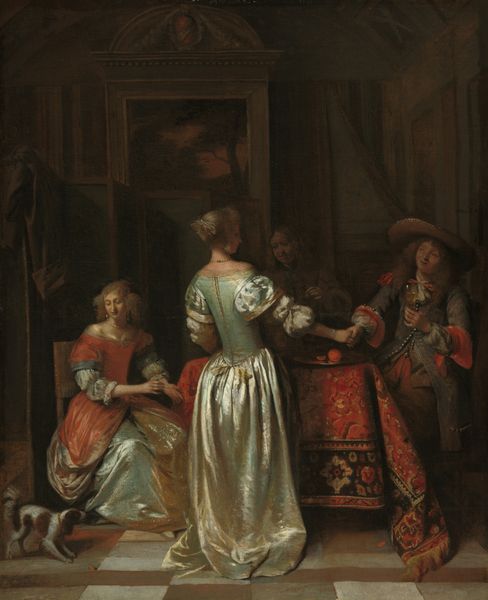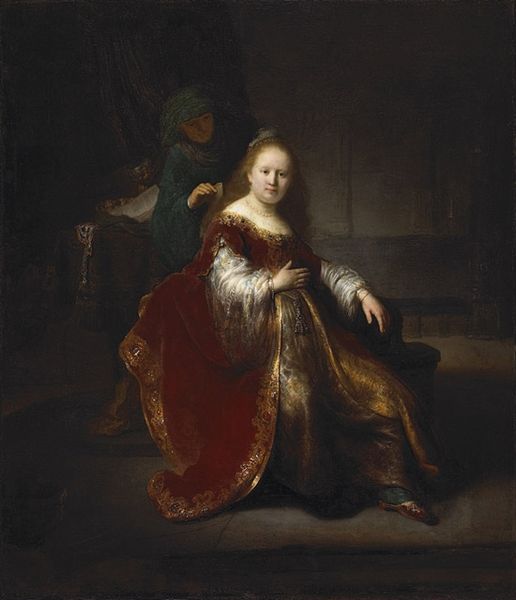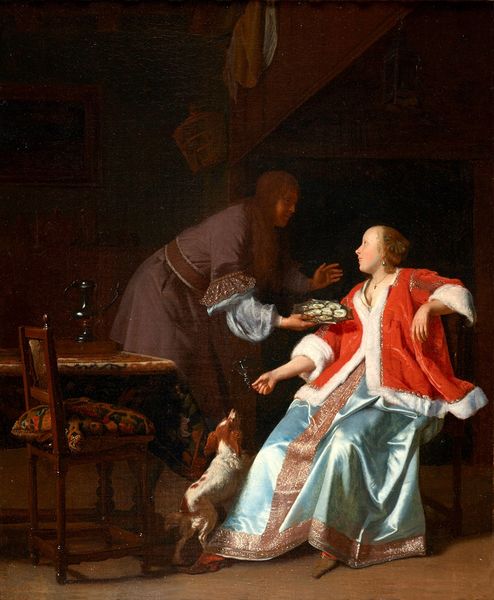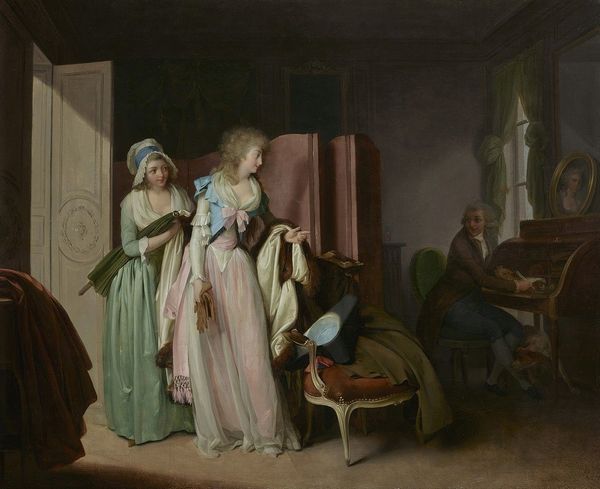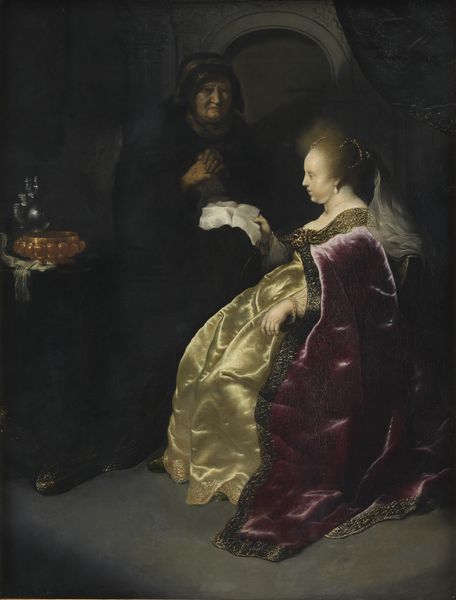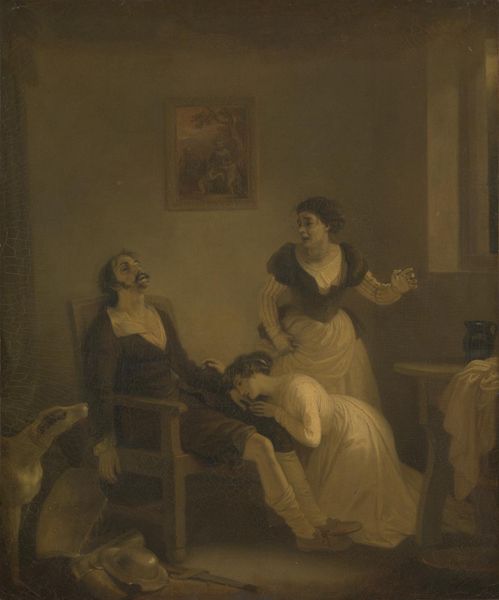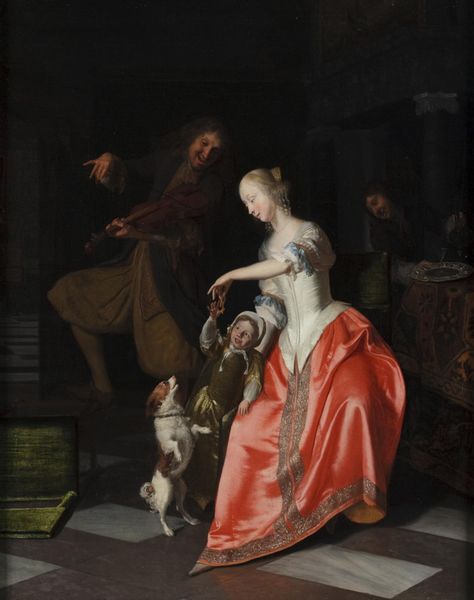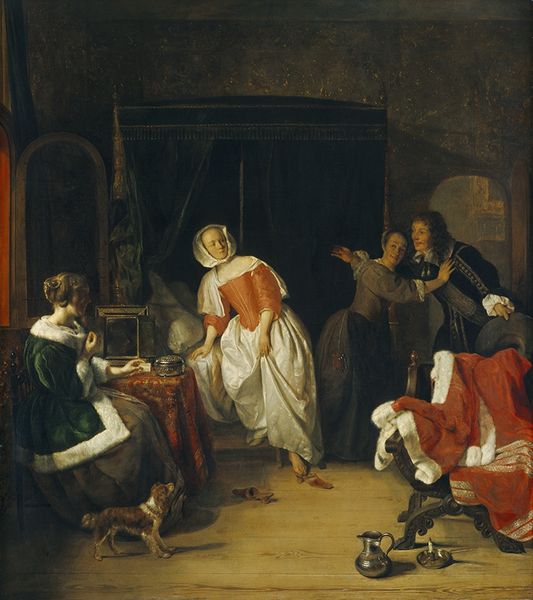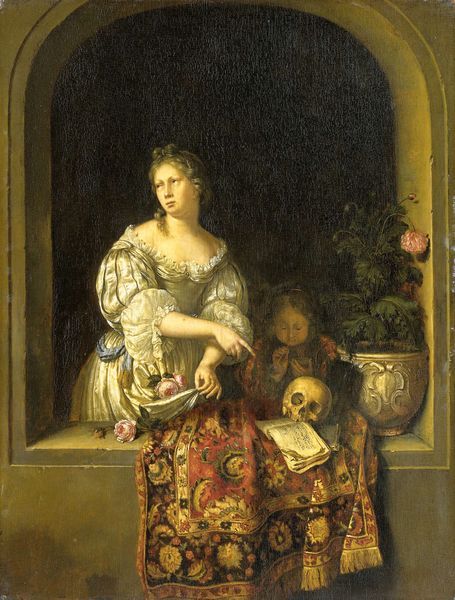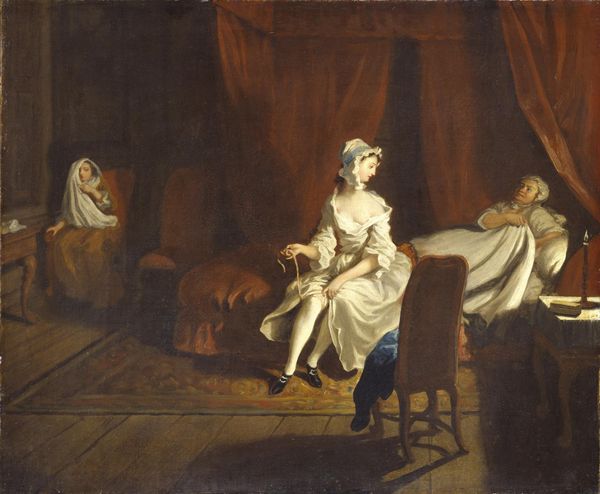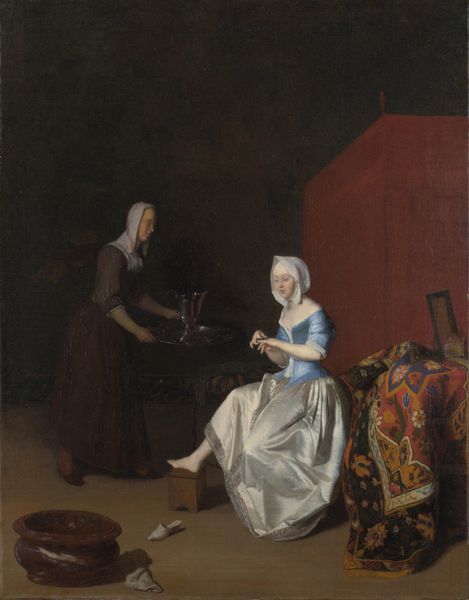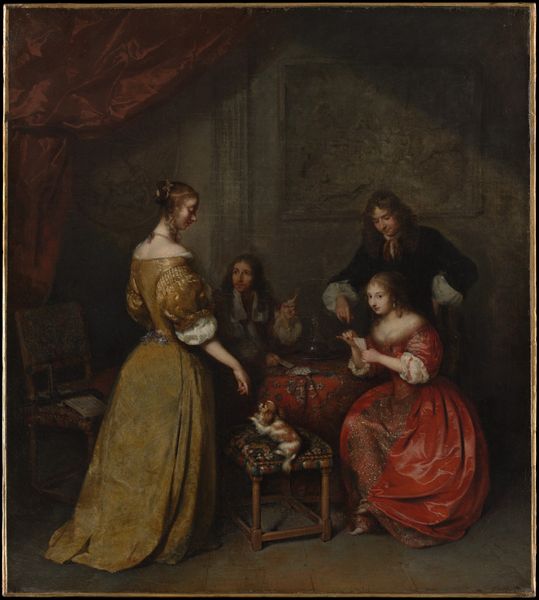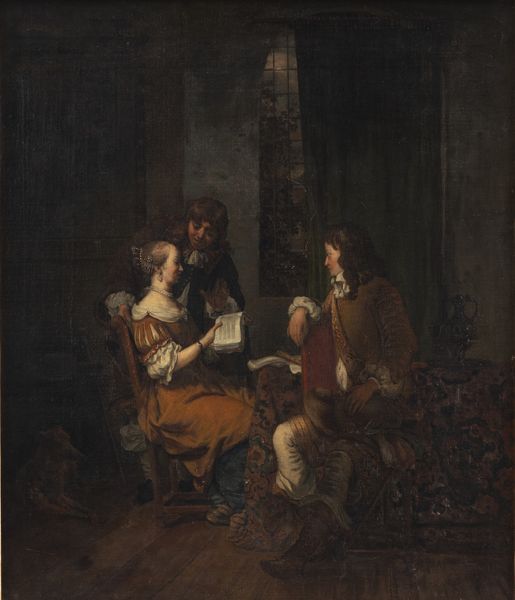
painting, oil-paint
#
portrait
#
dutch-golden-age
#
painting
#
oil-paint
#
oil painting
#
genre-painting
Dimensions: 63.5 x 91.4 cm
Copyright: Public domain
Editor: This is Jacob Ochtervelt's "The Love Letter," painted in 1670, with oil paint. It's held at the Met in New York City. The subdued colors give the scene such an intimate feel. How would you interpret this work through a historical lens? Curator: What stands out to me is how Ochtervelt is showcasing a scene of domesticity. The Golden Age of Dutch painting was very much supported by a rising merchant class. How might paintings like this, depicting scenes of comfortable domestic life, reinforce the values and aspirations of this particular social group? Editor: So you’re saying this painting isn't just about this lady's love life. It is also subtly advertising an ideal of domestic life and comfort available to the middle class? Curator: Precisely. The inclusion of objects like the oriental carpet draped over the table or the lapdog were signifiers of status and access to global trade networks. What effect does the relatively shallow depth of the image create for the viewer? Editor: It almost feels stage-like. So is it fair to suggest that it reflects an era where images, like paintings, started to perform more of a public role in shaping societal values, or almost "selling" ideas about status and social roles? Curator: Absolutely. Think about the emergence of the art market, the role of the Dutch East India Company, and the increasing emphasis on personal property during this period. These things all interplay in an image like this. In many ways, Ochtervelt isn't just depicting a moment. He's participating in a larger conversation about Dutch identity and prosperity. Editor: I hadn't considered the broader social implications tied to images like this. Curator: Looking at the broader cultural context definitely changes how one perceives the work, right?
Comments
No comments
Be the first to comment and join the conversation on the ultimate creative platform.
